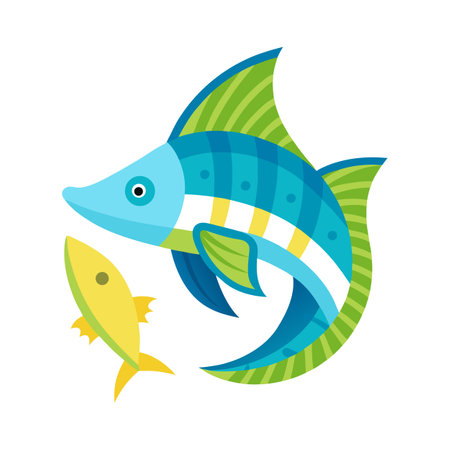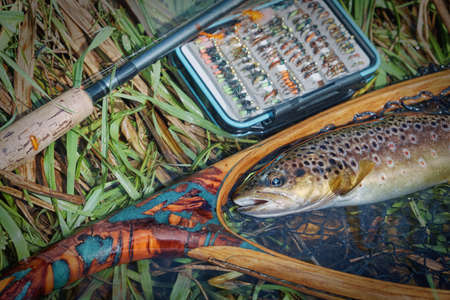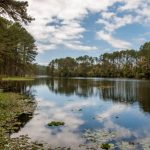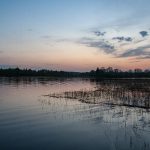Understanding Spring Bass Behavior
Spring is one of the most exciting times of year for bass fishing, but it can also be one of the most unpredictable. As water temperatures begin to rise, bass go through significant behavioral changes that affect where they are, how they move, and what they eat. Understanding these seasonal shifts is key to consistently locating and catching more bass.
Water Temperature and Its Impact
Bass are cold-blooded creatures, meaning their activity levels are directly affected by water temperature. In early spring, when the water is still cold (around 45-55°F), bass tend to stay in deeper waters where the temperature is more stable. As the water warms up to around 55-65°F, they begin moving toward shallower areas to prepare for spawning.
| Water Temperature (°F) | Bass Behavior | Best Fishing Strategy |
|---|---|---|
| 45-55°F | Holding deep, slow movement | Use slow-moving baits near structure |
| 55-65°F | Moving shallow, pre-spawn activity | Target transition zones with reaction baits |
| 65-75°F | Spawning in shallow flats | Focus on sight fishing and soft plastics |
Spawning Patterns
The spawn is a critical phase in the spring bass cycle. During this time, male bass build nests in shallow, sheltered areas—often near stumps, rocks, or vegetation. Females move in to lay eggs and then retreat back to deeper water. Males remain behind to guard the nests. Understanding this pattern helps anglers know when to fish shallow beds and when to target post-spawn females moving back out.
Pre-Spawn
This stage occurs as water temps rise above 50°F. Bass start staging near points, drop-offs, and creek channels close to their spawning grounds. Theyre aggressive and feed heavily during this time to prepare for the energy-consuming spawn.
Spawn
When temperatures hit the sweet spot of about 60-70°F, spawning kicks off. Look for clear, calm water with sandy or gravel bottoms—ideal nesting spots for largemouth bass.
Post-Spawn
After spawning, female bass are often tired and less aggressive. They typically head back into deeper water or hang around shady cover. Males stay behind guarding fry until theyre strong enough to survive on their own.
Feeding Habits in Spring
Bass feeding behavior shifts throughout spring depending on their stage in the spawn cycle. During pre-spawn and post-spawn periods, they’re more likely to chase fast-moving baitfish imitations like crankbaits or spinnerbaits. During the actual spawn, however, bass may not be feeding at all—they’re striking out of aggression or protection instinct rather than hunger.
| Spawn Stage | Main Feeding Behavior | Effective Lure Types |
|---|---|---|
| Pre-Spawn | Aggressive feeding before nesting | Lipless crankbaits, jerkbaits, jigs |
| Spawn | Minimal feeding; defensive strikes only | Soft plastics (creature baits), finesse rigs |
| Post-Spawn | Sporadic feeding; recovering energy | Topwaters early/late day, swimbaits near cover |
The Importance of Timing and Location
The combination of warming temperatures and changing daylight hours triggers migration patterns in bass. They move from wintering holes toward spawning flats through “transition zones” like secondary points and creek channels. Recognizing these movement paths can help you intercept fish before they settle into shallow beds—or after they leave them.
Quick Tip:
If you’re not seeing action in obvious shallow spots during early spring, don’t give up too soon. Work your way back along likely migration routes using electronics to locate holding fish in deeper water nearby.
The more you understand how bass behave during each phase of the spring season, the better equipped youll be to choose the right lures and find active fish. Whether youre chasing pre-spawners on staging points or picking off bedded males with finesse gear, timing your approach with nature’s rhythm is the key to success.
2. Top Spring Bass Fishing Locations
Spring is one of the best times to catch bass, but knowing where to look is half the battle. As water temperatures rise and bass begin their pre-spawn and spawning activities, they move into specific areas that offer warmth, protection, and access to food. Understanding your region and the layout of your local lakes or rivers can help you pinpoint the best spots to target bass during this active season.
Key Areas to Target
Across the U.S., bass follow predictable movement patterns in spring. They migrate from deeper wintering holes toward shallower zones as they prepare to spawn. Here are some of the top locations where you’ll find bass during this transitional period:
Shallow Flats
These areas warm up quickly under the sun, attracting baitfish and active bass. Look for sandy or gravel bottoms near spawning beds. In southern states like Texas and Florida, shallow flats can produce early due to warmer climate conditions.
Staging Points
Before moving onto the beds, bass often stop at staging points—typically secondary points or drop-offs near spawning coves. These spots provide easy access between deep and shallow water. Rocks, brush piles, or submerged timber on these points make them even more attractive.
Protected Coves and Pockets
Bass prefer calm waters for spawning, so protected coves shielded from wind and current are prime real estate. These areas warm faster than open water and offer safety for bedding fish.
Regional Breakdown of Spring Bass Locations
| Region | Top Spring Locations | Water Temp Range (°F) |
|---|---|---|
| Southeast (FL, GA, AL) | Shallow grass flats, canals, protected bays | 60–75 |
| Midwest (IL, OH, MO) | Secondary points, rocky shorelines, creek arms | 50–65 |
| Northeast (NY, PA, MA) | Coves with dark bottom, warming shallows near channels | 48–60 |
| West Coast (CA, AZ) | Sheltered pockets in reservoirs, submerged brush lines | 55–70 |
| Southwest (TX, OK) | Muddy backwaters, flooded timber near flats | 60–75 |
Tips for Finding Productive Spots
- Use a fish finder: Scan transition zones from deep to shallow.
- Watch for wildlife: Birds diving or baitfish activity can signal nearby bass.
- Check sun exposure: North-facing banks warm faster in spring.
- Look after warm fronts: A few sunny days in a row can push bass shallow fast.
The key is staying mobile and observing how changing weather impacts water temperature and clarity. Once you’ve located a good area based on seasonal patterns and geography, youll increase your chances of landing quality spring bass.

3. Must-Have Spring Bass Lures and Baits
Spring is a prime time to catch bass, but choosing the right lures can make all the difference. As water temperatures rise and bass move from their winter holding spots into shallower spawning areas, their behavior changes—and so should your bait selection. Here are some of the best lures and baits for targeting bass in the spring, plus tips on when and how to use them effectively.
Top Spring Bass Lures
| Lure Type | Best Conditions | Presentation Tips |
|---|---|---|
| Jerkbaits | Clear to slightly stained water; 45–60°F temps | Use a twitch-pause-twitch retrieve; vary pause length depending on water temp |
| Lipless Crankbaits | Stained to muddy water; around grass flats or structure | Yo-yo retrieve or steady medium-speed crank along drop-offs and flats |
| Soft Plastic Worms & Creatures | All water clarities; ideal for slow fishing near beds or cover | Texas-rigged or wacky style; drag slowly or hop near shallow cover |
| Spinnerbaits | Windy days, stained water, low light conditions | Slow-roll around wood, laydowns, and grass edges |
| Swimbaits (Paddle-tail) | Mildly stained water with active fish moving shallow | Steady retrieve along shoreline or across points where bass stage |
Selecting the Right Lure Based on Conditions
The key to successful spring bass fishing is matching your lure to the current conditions. If the water is still cold but starting to warm, suspending jerkbaits are deadly because they mimic sluggish baitfish. As things heat up, lipless crankbaits shine for covering water quickly and triggering reaction strikes.
Water Temperature Guide:
- 45–55°F: Go with slow presentations like jerkbaits and soft plastics.
- 55–65°F: Bass become more aggressive—lipless cranks and spinnerbaits work well.
- 65°F+: Focus on soft plastics near spawning beds and shallow cover.
Bait Presentation Tips for Spring Success
No matter which bait you choose, how you present it matters just as much. In colder water, slow down your retrieve—bass are still sluggish and won’t chase fast-moving lures. In warmer conditions, don’t be afraid to speed things up or add erratic movements to provoke reaction bites. Keep an eye on bass behavior and adjust accordingly.
Pro Tip:
If youre not getting bites with one type of lure, switch it up! Spring bass can be moody—what worked yesterday might not work today. Having a few different styles ready to go will keep you in the game.
Tune into what the fish are telling you each trip out, and youll dial in your springtime strategy in no time.
4. Essential Gear and Tackle Setup
Having the right gear setup is a game-changer when targeting bass in the spring. As the water warms up and bass become more active, using the proper rod, reel, and line combinations for different techniques will help you catch more fish and make quick adjustments when conditions change.
Rod, Reel, and Line Combinations by Technique
Spring bass fishing often involves a variety of techniques—from finesse presentations to power fishing. Heres a simple breakdown of recommended setups based on popular spring tactics:
| Technique | Rod | Reel | Line Type & Weight |
|---|---|---|---|
| Texas Rig | 7 Medium-Heavy Fast Action | Baitcasting | Fluorocarbon 12–17 lb |
| Spinnerbait | 66″–7 Medium-Heavy Moderate Action | Baitcasting | Monofilament or Fluorocarbon 14–17 lb |
| Ned Rig | 610″–7 Medium-Light Fast Action | Spinning | Braided mainline (10 lb) with Fluoro leader (6–8 lb) |
| Crankbait (Shallow/Medium) | 7 Medium Moderate Action | Baitcasting | Monofilament 10–14 lb |
| Jerkbait | 66″–7 Medium Fast Action | Baitcasting or Spinning | Fluorocarbon 10–12 lb |
Tackle Organization Tips for Spring Fishing
Stay Versatile with Modular Tackle Boxes
Spring weather can change fast, and so can fish behavior. Use small, labeled tackle trays to separate lures by category—crankbaits, soft plastics, jigs, etc.—so you can switch up quickly without digging through a mess.
Pre-Rig Multiple Rods for Efficiency
If youre bank fishing or launching from a boat, having multiple rods pre-rigged with different baits saves time and helps you adapt fast when the bite shifts. For example, keep one rod rigged with a soft plastic, another with a reaction bait like a spinnerbait or chatterbait.
Use Rod Sleeves and Reel Covers for Protection
Your gear is an investment. Keep rods from getting tangled or damaged in transport by using rod sleeves. Reel covers help protect your reels from dust and scratches during storage or long drives to the lake.
Tackle Must-Haves Checklist:
- Soft plastics: Creature baits, worms, stick baits in natural colors like green pumpkin or watermelon red flake.
- Reaction baits: Lipless crankbaits, spinnerbaits, chatterbaits in shad or craw patterns.
- Terminal tackle: Hooks (EWG and offset), bullet weights, jig heads, snaps.
- Tungsten weights: More compact than lead and transmit bottom feel better—great for finesse rigs.
- Pliers & scissors: Essential for cutting line and removing hooks safely.
- Sunscreen & polarized sunglasses: Protect yourself while spotting fish and structure better on sunny days.
A well-prepared tackle setup not only boosts your efficiency but also gives you confidence to fish more effectively during this active spring period.
5. Techniques That Consistently Produce Strikes
Spring bass fishing can be incredibly rewarding if you know the right techniques to use during the different phases of the season. As water temperatures rise and bass begin moving from deep winter haunts to shallower spawning areas, their behavior changes — and so should your approach. Here are some proven techniques that consistently trigger bites in spring:
Slow Rolling Spinnerbaits
One of the most effective ways to catch pre-spawn bass is by slow rolling a spinnerbait through transition zones like points, channel swings, and secondary drop-offs. This technique mimics a struggling baitfish and gives bass an easy target when theyre not fully aggressive yet.
Tips for Slow Rolling:
- Use a 3/8 oz or 1/2 oz spinnerbait with double willow or Colorado blades.
- Retrieve slowly just above bottom structure.
- Use a medium-heavy rod for better control and hooksets.
Sight Fishing for Spawning Bass
As the water warms into the upper 50s and 60s (°F), bass move onto beds in shallow flats. Sight fishing becomes highly effective during this spawning phase, especially in clear water where visibility is good.
What You Need:
- Polarized sunglasses to spot bedding fish.
- Soft plastics like tubes, creature baits, or stick worms rigged Texas-style.
- A spinning rod with light line for finesse presentation.
Targeting Transition Zones
Bass don’t just magically appear on beds—they migrate from deeper water to shallows through predictable routes. These routes, known as transition zones, include creek channels, submerged roadbeds, or gradual sloping banks. Targeting these areas is key during both pre-spawn and post-spawn phases.
Effective Lures for Transition Zones:
| Lure Type | When to Use | Why It Works |
|---|---|---|
| Crankbaits | Pre-Spawn | Covers water quickly and triggers reaction strikes |
| Jigs | Pre- to Post-Spawn | Mimics crawfish; great for working structure slowly |
| Ned Rigs | Post-Spawn | Finesse approach when bass are finicky after spawn |
Bonus Tip: Match Your Technique to Water Conditions
If the water’s stained or muddy, use louder, bulkier lures like chatterbaits or dark-colored jigs. In clear water, go with more natural presentations like soft plastic jerkbaits or swimbaits. Matching your technique to visibility and temperature can make all the difference during spring transitions.
Key Takeaway:
The spring season offers multiple opportunities to catch bass as they move through different behavioral phases. By mastering techniques like slow rolling spinnerbaits, sight fishing during the spawn, and targeting transition zones with the right lures, youll increase your chances of success dramatically. Keep adapting based on water temps and clarity, and youll stay ahead of the bite all season long.
6. Weather Patterns and Timing Tips
Understanding how spring weather affects bass behavior can seriously improve your chances of landing more fish. In the spring, bass are on the move—transitioning from deeper winter spots to shallower spawning areas. Their activity levels are highly influenced by changing weather patterns, especially temperature swings and pressure systems.
Use Weather to Your Advantage
Spring weather can be unpredictable, but learning how bass react to different conditions will help you adjust your tactics.
Post-Front Conditions
After a cold front passes through, bass often become sluggish and move back into deeper water or tight cover. During these times, slow down your presentation. Use finesse techniques like drop shots or shaky heads, and focus on structure like submerged timber or rock piles where bass might hunker down.
Warming Trends
A few days of consistent warm weather can really fire up the bite. As water temperatures rise, bass become more active and start moving into shallower flats to feed and prepare for spawning. This is the perfect time to throw reaction baits like spinnerbaits, chatterbaits, and squarebill crankbaits.
Best Times of Day to Fish in Spring
Time of day also plays a huge role during spring fishing. The following table breaks down when you should be on the water for the best action:
| Time of Day | Bass Activity Level | Recommended Techniques |
|---|---|---|
| Early Morning (Sunrise – 9 AM) | Moderate to High (especially after warm nights) | Topwater lures near shallow cover, jerkbaits |
| Late Morning to Early Afternoon (9 AM – 2 PM) | High (as water warms) | Spinnerbaits, crankbaits, Texas-rigged soft plastics |
| Afternoon to Evening (2 PM – Sunset) | Moderate | Slow presentations near structure; jigs, creature baits |
Quick Tips for Reading Spring Conditions
- Watch water temps: Bass start moving shallow around 50–60°F.
- Monitor barometric pressure: Falling pressure before a front = more aggressive bites; rising pressure after = tougher bite.
- Look for windblown banks: These areas gather baitfish and stir up food sources—bass love them.
The key is staying flexible and letting the conditions guide your approach. With practice, reading spring weather patterns becomes second nature—and that means more fish in the boat.


